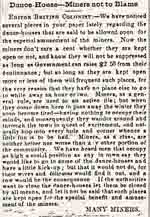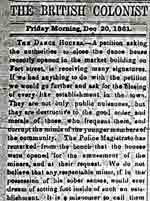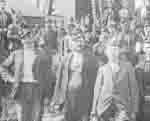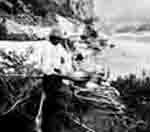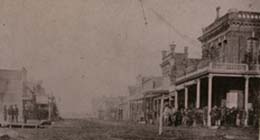
Victoria's Secret:
| The Dance Floor |
| Sexual History |
| Nightly Entertainment |
| Stakeholders |
| Local Halls |
| Original Sources |
| Citations |
| About Us |
| Clients of Dance Halls |
People:
Aims:
Methods:
Miner’s Defence While other types of people may have been present at dance halls, society most commonly believed that miners who were eager to spend their earnings on an evening of social interaction with Native women were the most prevalent clients of dance houses.* A letter to the British Colonist editor from “many miners” tried to defer blame of the raucous houses from themselves by indicating the labourers were indifferent to the presence of dance hall’s, but would “frequent such places [because] . . . they have no place else to go”.* Other groups of men in society provided the dance halls, [with clients] but the miners bore most of the brunt of the negative social response. Miner’s Behaviour Despite the miner’s defence, dance halls were “licensed to suit their tastes.” Accusations that the establishments were “sinks of iniquity and pollution” where prostitution and other vices lurked reflects the attitudes and desires of the clients.* Miners were used to an “active life” and tended to be very rowdy and noisy while at dance halls.* Drunkenness would have contributed to the lewd, unruly language and behaviour of the miners with their Native partners.* Since there were very few white women compared to men in Victorian England, it was assumed to be natural that Native women could be used to satisfy “natural desires”,* hence the popularity of Indigenous prostitutes in dance halls. The men who frequented dance hall most likely enjoyed the most physical pleasures of the craze.
|
